Filters: School Or College: "School of Medicine" Collection: "ir_uspace" Type: "Text" Format: "application/pdf"
| Creator | Title | Description | Subject | Date | ||
|---|---|---|---|---|---|---|
| 26 |
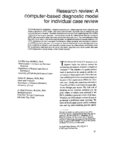 |
Warner, Homer R. | A Computer-Based Diagnostic Model for Individual Case Review | Biomedical Informatics | 1995 | |
| 27 |
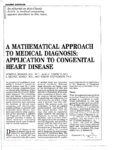 |
Warner, Homer R. | A Mathematical Approach to Medical Diagnosis: Application to Congenital Heart Disease | Biomedical Informatics | 1992 | |
| 28 |
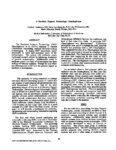 |
Warner, Homer R. | A Decision Support Technology Clearinghouse | Biomedical Informatics | 1988 | |
| 29 |
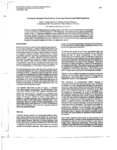 |
Warner, Homer R. | A Computer-Directed Patient History: Functional Overview and Initial Experience | Biomedical Informatics | 1986 | |
| 30 |
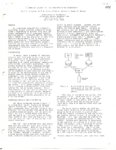 |
Warner, Homer R. | A Computer System for the Cardiovascular Laboratory | Biomedical Informatics | 1974 | |
| 31 |
 |
Warner, Homer R. | A Mathematical Approach to Medical Diagnosis: Application to Polycythemic States Utilizing Clinical Findings with Values Continuously Distributed | Biomedical Informatics | 1969 | |
| 32 |
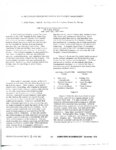 |
Warner, Homer R. | A Distributed Processing System for Patient Management | Biomedical Informatics | 1978 | |
| 33 |
 |
Warner, Homer R. | A Data-Trend Log and Bar Graph Dispaly for Physiological Monitoring | Biomedical Informatics | 1970 | |
| 34 |
 |
Warner, Homer R. | Clustered Knowledge Representation: Increasing the Reliability of Computerized Expert Systems | Biomedical Informatics | 1988 | |
| 35 |
 |
Warner, Homer R. | Comparison of Different Information Content Models by Using Two Strategies: Development of the Best Information Algorithm for Iliad | Biomedical Informatics | 1992 | |
| 36 |
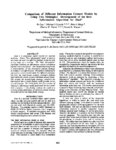 |
Warner, Homer R. | Comparison of Different Information Content Models by Using Two Strategies: Development of the Best Information Algorithm for ILIAD | Biomedical Informatics | 1992 | |
| 37 |
 |
Mitchell, Joyce A. | Evaluating the informatics for integrating biology and the bedside system for clinical research | Background: Selecting patient cohorts is a critical, iterative, and often time-consuming aspect of studies involving human subjects; informatics tools for helping streamline the process have been identified as important infrastructure components for enabling clinical and translational research. We d... | 2009-01-01 | |
| 38 |
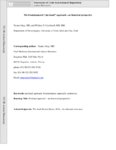 |
Couldwell, William T. | The frontotemporal (Pterional) approach: an historical perspective | The frontotemporal, so-called "pterional" approach has evolved with the contribution of many neurosurgeons over the past century. It has stood the test of time and been the most commonly used transcranial approach in neurosurgery. In its current form, drilling the sphenoid wing as far down as the su... | 2012-01-01 | |
| 39 |
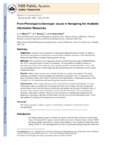 |
Mitchell, Joyce A. | From phenotype to genotype: issues in navigating the available information resources | Objectives-As part of an investigation of connecting health professionals and the lay public to both disease and genomic information, we assessed the availability and nature of the data from the Human Genome Project relating to human genetic diseases. Methods-We focused on a set of single gene disea... | 2003-01-01 | |
| 40 |
 |
Frederick, Jeanne M. | Inactivity of human β,β-carotene-9′, 10-′dioxygenase (BCO2) underlies retinal accumulation of the human macular carotenoid pigment | The macula of the primate retina uniquely concentrates high amounts of the xanthophyll carotenoids lutein, zeaxanthin, and meso-zeaxanthin, but the underlying biochemical mechanisms for this spatial- and species-specific localization have not been fully elucidated. For example, despite abundant reti... | 2014-01-01 | |
| 41 |
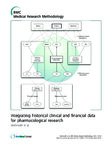 |
Mitchell, Joyce A. | Integrating historical clinical and financial data for pharmacological research | Background: Retrospective research requires longitudinal data, and repositories derived from electronic health records (EHR) can be sources of such data. With Health Information Technology for Economic and Clinical Health (HITECH) Act meaningful use provisions, many institutions are expected to adop... | 2011-01-01 | |
| 42 |
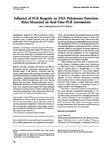 |
Wittwer, Carl T. | Influence of PCR reagents on DNA polymerase extension rates measured on real-time PCR instruments | BACKGROUND: Radioactive DNA polymerase activity methods are cumbersome and do not provide initial extension rates. A simple extension rate assay would enable study of basic assumptions about PCR and define the limits of rapid PCR. METHODS: A continuous assay that monitors DNA polymerase extension us... | 2014-01-01 | |
| 43 |
 |
Mitchell, Joyce A. | Mendelian inheritance in man: diagnoses in the UMLS | Because they deal with many distinct but rare inheritance diseases, geneticists have difficulty translating from their codes to other biomedical coding schemes. The objective ofthis research was to investigate the potential uses and difficulties of using the UMLS Metathesaurus for genetic diagnoses ... | 1993-01-01 | |
| 44 |
 |
Mansour, Suzanne L. | Fgf10 is required for specification of non-sensory regions of the cochlear epithelium | The vertebrate inner ear is a morphologically complex sensory organ comprised of two compartments, the dorsal vestibular apparatus and the ventral cochlear duct, required for motion and sound detection, respectively. Fgf10, in addition to Fgf3, is necessary for the earliest stage of otic placode ind... | 2014-01-01 | |
| 45 |
 |
Dailey, Andrew T. | Guideline update for the performance of fusion procedures for degenerative disease of the lumbar spine. Part 3: Assessment of economic outcome | A comprehensive economic analysis generally involves the calculation of indirect and direct health costs from a societal perspective as opposed to simply reporting costs from a hospital or payer perspective. Hospital charges for a surgical procedure must be converted to cost data when performing a c... | 2014-01-01 | |
| 46 |
 |
Lucero, Mary T. | Gut endoderm is involved in the transfer of left-right asymmetry from the node to the lateral plate mesoderm in the mouse embryo | 2012-01-01 | ||
| 47 |
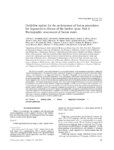 |
Dailey, Andrew T. | Guideline update for the performance of fusion procedures for degenerative disease of the lumbar spine. Part 4: Radiographic assessment of fusion status | The ability to identify a successful arthrodesis is an essential element in the management of patients undergoing lumbar fusion procedures. The hypothetical gold standard of intraoperative exploration to identify, under direct observation, a solid arthrodesis is an impractical alternative. Therefore... | 2014-01-01 | |
| 48 |
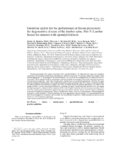 |
Dailey, Andrew T. | Guideline update for the performance of fusion procedures for degenerative disease of the lumbar spine. Part 9: Lumbar fusion for stenosis with spondylolisthesis | Patients presenting with stenosis associated with a spondylolisthesis will often describe signs and symptoms consistent with neurogenic claudication, radiculopathy, and/or low-back pain. The primary objective of surgery, when deemed appropriate, is to decompress the neural elements. As a result of t... | 2014-01-01 | |
| 49 |
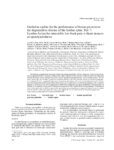 |
Dailey, Andrew T. | Guideline update for the performance of fusion procedures for degenerative disease of the lumbar spine. Part 7: Lumbar fusion for intractable low-back pain without stenosis or spondylolisthesis | Establishing an appropriate treatment strategy for patients presenting with low-back pain, in the absence of stenosis or spondylolisthesis, remains a controversial subject. Inherent to this situation is often an inability to adequately identify the source of low-back pain to justify various treatmen... | 2014-01-01 | |
| 50 |
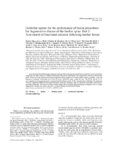 |
Dailey, Andrew T. | Guideline update for the performance of fusion procedures for degenerative disease of the lumbar spine. Part 2: Assessment of functional outcome following lumbar fusion | Assessment of functional patient-reported outcome following lumbar spinal fusion continues to be essential for comparing the effectiveness of different treatments for patients presenting with degenerative disease of the lumbar spine. When assessing functional outcome in patients being treated with l... | 2014-01-01 |
